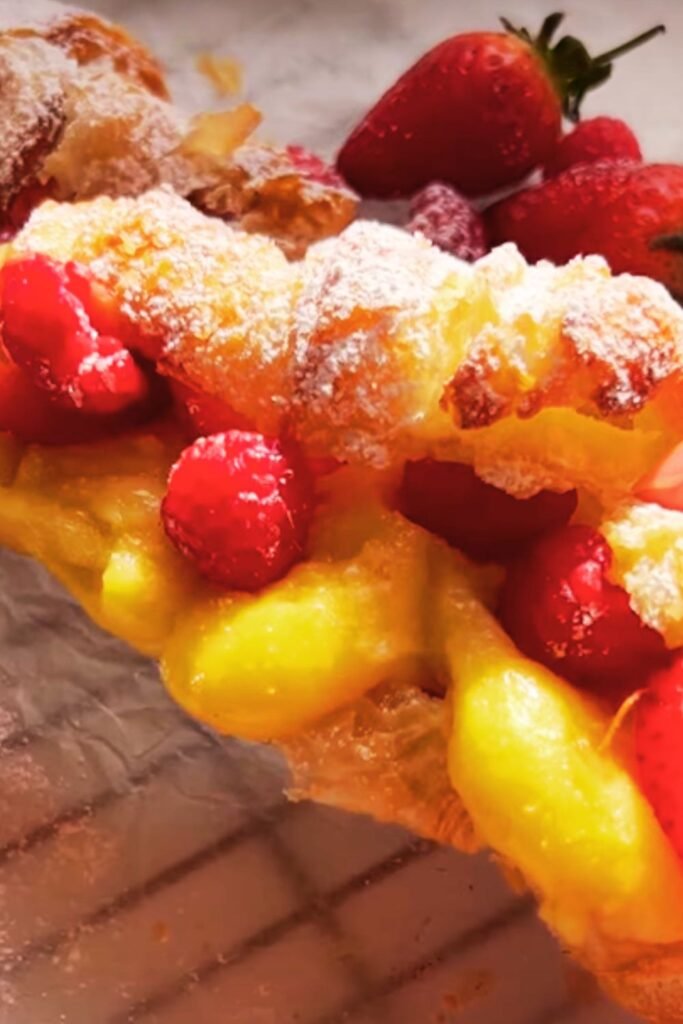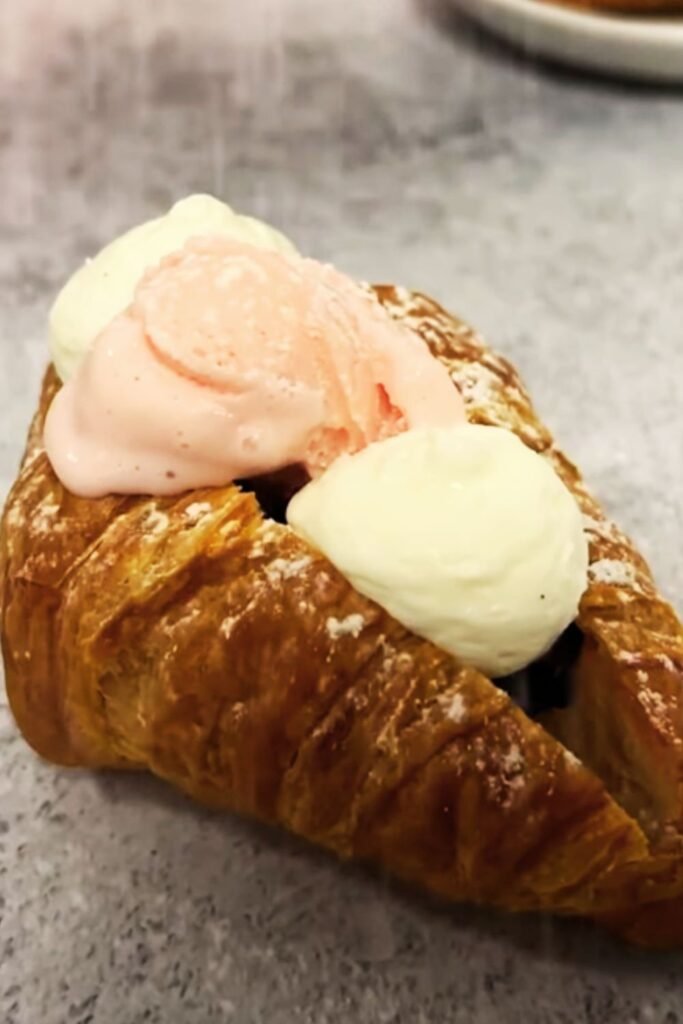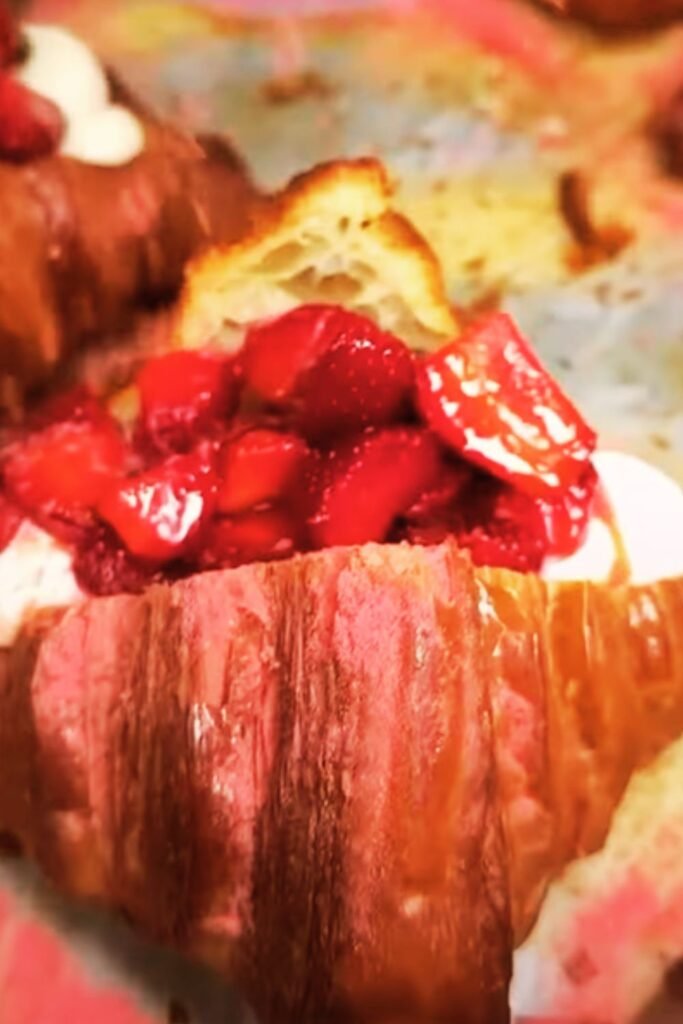When I first discovered matcha crinkle cookies, I knew I had stumbled upon something extraordinary. These vibrant green treats combine the sophisticated, earthy flavor of ceremonial-grade matcha with the beloved crinkled texture that makes any cookie irresistible. After countless attempts perfecting my recipe, I’m thrilled to share everything you need to know about creating these stunning cookies that never fail to impress guests and satisfy my own matcha cravings.
The beauty of matcha crinkle cookies lies not just in their striking appearance, but in how they deliver complex flavors in every bite. Unlike traditional chocolate crinkle cookies, these green gems offer a unique combination of slight bitterness, natural sweetness, and that distinctive umami note that only high-quality matcha can provide. I’ve spent years refining this recipe, and I can confidently say these cookies rival any bakery version you’ll find.
Understanding Matcha: The Heart of These Cookies
Matcha: Finely ground powder made from specially grown and processed green tea leaves, offering concentrated flavor and nutritional benefits.
Ceremonial Grade: The highest quality matcha, with vibrant color and smooth taste perfect for baking applications.
Culinary Grade: A more affordable option with stronger flavor, ideal for recipes where matcha needs to compete with other ingredients.
Umami: The fifth taste sensation, providing a savory depth that balances sweetness in these cookies.
The quality of matcha you choose dramatically impacts your final results. I always recommend investing in ceremonial-grade matcha for the most authentic flavor and that brilliant green color that makes these cookies so visually striking. When I use lower-quality matcha, I notice the cookies lose their vibrancy and develop a slightly bitter aftertaste that overshadows the delicate balance I’m aiming for.
Essential Ingredients and Their Roles
Creating perfect matcha crinkle cookies requires understanding how each ingredient contributes to the final texture and flavor profile. I’ve experimented with numerous variations, and this combination consistently delivers exceptional results.
| Ingredient | Amount | Purpose | Substitution Notes |
|---|---|---|---|
| All-purpose flour | 2¼ cups | Structure and texture | Cake flour for softer cookies |
| Ceremonial matcha powder | 3 tablespoons | Primary flavor and color | Culinary grade acceptable |
| Baking soda | 1 teaspoon | Leavening and spread | Cannot substitute |
| Salt | ½ teaspoon | Flavor enhancement | Sea salt preferred |
| Unsalted butter | ¾ cup | Richness and texture | European style for best flavor |
| Granulated sugar | 1 cup | Sweetness and structure | Cannot reduce significantly |
| Brown sugar | ½ cup | Moisture and chewiness | Light or dark brown |
| Large eggs | 2 | Binding and moisture | Room temperature essential |
| Vanilla extract | 1 teaspoon | Flavor complement | Pure extract only |
| Powdered sugar | 1 cup | Coating for crinkle effect | Cannot substitute |

The ratio of granulated to brown sugar took me months to perfect. Too much brown sugar makes the cookies overly soft, while too much granulated sugar creates a texture that’s too crisp. This combination gives you that perfect chewy center with slightly crisp edges that I consider the hallmark of exceptional crinkle cookies.
Step-by-Step Preparation Method
My technique for these cookies has evolved through countless batches, and I’ve learned that timing and temperature control are absolutely crucial for achieving that perfect crinkled appearance.
Preparation Phase
I always start by bringing my eggs and butter to room temperature at least two hours before baking. Cold ingredients simply don’t cream properly, resulting in dense cookies that lack the light, chewy texture I’m after. While waiting, I sift my matcha powder twice to eliminate any clumps that could create bitter pockets in the finished cookies.
Mixing Process
- Cream butter and sugars: Using my stand mixer on medium speed, I cream the room-temperature butter with both sugars for exactly four minutes. The mixture should be light, fluffy, and noticeably paler than when I started.
- Add eggs gradually: I incorporate eggs one at a time, beating thoroughly after each addition. This prevents the mixture from breaking and ensures smooth integration.
- Vanilla incorporation: A teaspoon of pure vanilla extract goes in next, beaten just until combined.
- Dry ingredient combination: In a separate bowl, I whisk together flour, sifted matcha powder, baking soda, and salt. This ensures even distribution of the matcha throughout the cookies.
- Final mixing: I add the dry ingredients to the wet mixture on low speed, mixing just until combined. Overmixing develops gluten, creating tough cookies.
Chilling Process
This step separates good matcha crinkle cookies from extraordinary ones. I wrap the dough tightly in plastic wrap and refrigerate for exactly two hours. Shorter chilling times don’t firm the dough enough for proper shaping, while longer periods make it too hard to work with effectively.

Shaping and Baking Techniques
The visual appeal of crinkle cookies depends entirely on proper shaping and the powdered sugar coating technique. I’ve refined my approach through years of experimentation.
Shaping Process
After chilling, I portion the dough using a medium cookie scoop, creating uniform balls about 1½ inches in diameter. Working quickly prevents the dough from warming up, which would affect the final texture. Each ball gets rolled between my palms to ensure perfect roundness.
Coating Technique
I roll each dough ball generously in powdered sugar, ensuring complete coverage. The key is using enough sugar to create those dramatic white cracks that contrast beautifully with the green interior. I typically go through about a cup of powdered sugar for a full batch.
Baking Parameters
| Setting | Temperature/Time | Reason |
|---|---|---|
| Oven temperature | 350°F (175°C) | Optimal for even baking |
| Baking time | 10-12 minutes | Prevents overbaking |
| Pan spacing | 2 inches apart | Allows for spreading |
| Pan type | Light-colored | Prevents bottom burning |
| Cooling time | 5 minutes on pan | Sets structure |
I bake these cookies on parchment-lined baking sheets, spacing them about two inches apart. The cookies spread during baking, and adequate spacing prevents them from merging together. After exactly 10-12 minutes, when the edges are set but centers still look slightly soft, I remove them from the oven.
Texture and Flavor Profile Analysis
Perfect matcha crinkle cookies should offer multiple textural experiences in each bite. The exterior provides a slight crispness from the powdered sugar coating, while the interior remains tender and chewy. I’ve found that achieving this balance requires precise timing and temperature control throughout the entire process.
The flavor profile develops in layers. Initially, you taste the sweetness from the sugar coating, followed immediately by the distinctive earthy, slightly bitter notes of the matcha. The vanilla adds subtle depth, while the brown sugar contributes caramel undertones that complement the matcha beautifully. When executed properly, these cookies offer sophisticated flavor complexity that appeals to both matcha enthusiasts and newcomers alike.

Troubleshooting Common Issues
Through my years of making these cookies, I’ve encountered and solved virtually every problem that can arise. Here are the most common issues and my proven solutions:
Flat cookies without crinkles: This usually indicates insufficient chilling time or dough that’s too warm when shaped. I always ensure my dough is properly chilled and work quickly during the shaping process.
Bitter flavor overpowering sweetness: Lower-quality matcha or excessive amounts can create this problem. I stick to my tested ratios and invest in good matcha powder.
Uneven color distribution: Inadequate sifting of the matcha powder creates this issue. I always sift twice and whisk thoroughly with the flour.
Cookies spreading too much: Warm dough or incorrect oven temperature causes excessive spreading. I verify my oven temperature with a separate thermometer and maintain proper dough temperature.
Storage and Serving Recommendations
Proper storage maintains the texture and flavor I work so hard to achieve. I store cooled cookies in airtight containers at room temperature, where they maintain optimal texture for up to one week. For longer storage, I freeze them in freezer-safe containers for up to three months.
These cookies pair beautifully with various beverages and complement different occasions perfectly. I serve them alongside:
- Hot green tea for an authentic Japanese-inspired experience
- Cold milk for a comforting American-style treat
- Iced coffee to balance the earthy flavors
- Fresh fruit salads where the matcha adds sophisticated contrast
- Vanilla ice cream for an elegant dessert presentation
For special occasions, I arrange them on tiered serving platters where their vibrant color creates stunning visual impact. The contrast between the white powdered sugar exterior and bright green interior never fails to impress guests.
Nutritional Information and Dietary Considerations
Understanding the nutritional aspects helps me make informed decisions about serving sizes and frequency. Each cookie contains approximately:
| Nutrient | Per Cookie | Daily Value % |
|---|---|---|
| Calories | 165 | 8% |
| Total Fat | 6g | 9% |
| Saturated Fat | 3.5g | 18% |
| Cholesterol | 25mg | 8% |
| Sodium | 85mg | 4% |
| Carbohydrates | 26g | 9% |
| Sugars | 18g | – |
| Protein | 2g | 4% |
| Antioxidants | High | – |
The matcha powder contributes significant antioxidants, including catechins and EGCG, which provide health benefits beyond basic nutrition. However, I always remember these are treats meant for enjoyment rather than health foods.
For dietary modifications, I’ve successfully created gluten-free versions using almond flour blends, though the texture differs slightly from the traditional recipe. Vegan adaptations using plant-based butter and egg substitutes work reasonably well, though I find the texture isn’t quite as perfect as the original version.
Advanced Techniques and Variations
After mastering the basic recipe, I enjoy experimenting with creative variations that maintain the essential character while adding unique elements:
White Chocolate Matcha Crinkles: I fold in white chocolate chips before chilling, creating pockets of sweetness that complement the matcha beautifully.
Matcha Sandwich Cookies: Using smaller portions of dough, I create bite-sized cookies perfect for sandwiching with cream cheese or white chocolate ganache.
Double Matcha Version: For intense matcha lovers, I increase the powder to four tablespoons and add matcha extract for concentrated flavor.
Seasonal Adaptations: During holidays, I incorporate food coloring to create festive variations while maintaining the authentic matcha taste.
Each variation requires slight adjustments to baking time and technique, but the fundamental principles remain constant.
Questions and Answers
Q: Can I make these cookies without a stand mixer? A: Absolutely! I’ve made excellent batches using a hand mixer, though the creaming process takes slightly longer. The key is achieving that light, fluffy texture regardless of your mixing method.
Q: Why do my cookies lose their green color after baking? A: This typically happens when the oven temperature is too high or baking time is excessive. Matcha is heat-sensitive, so I maintain moderate temperatures and watch timing carefully.
Q: Can I prepare the dough in advance? A: Yes, the dough actually improves with longer chilling. I often prepare it a day ahead, which makes the shaping process easier and enhances flavor development.
Q: What’s the best way to measure matcha powder accurately? A: I always sift the matcha first, then spoon it lightly into measuring spoons. Packing it down creates inconsistent measurements that affect both flavor and color.
Q: How do I know when the cookies are perfectly done? A: The edges should be set and the centers should still appear slightly soft and underbaked. They continue cooking on the hot pan after removal from the oven.
Q: Can I reduce the sugar content without affecting texture? A: I don’t recommend reducing sugar significantly, as it affects both structure and the characteristic crinkled appearance. The sugar is essential for proper texture development.
Q: Why do some of my cookies crack more dramatically than others? A: Uniform dough temperature and consistent powdered sugar coating create even cracking. I work quickly and maintain consistent technique throughout the shaping process.
Q: Is there a difference between matcha brands for baking? A: Definitely! Higher-quality matcha produces better color, smoother flavor, and more appealing final results. I consider it worth the investment for special occasions.
Creating perfect matcha crinkle cookies requires attention to detail, quality ingredients, and patience with the process. Through my years of refinement, I’ve discovered that success lies in understanding how each element contributes to the final result. These cookies represent the perfect marriage of Japanese tradition and American baking techniques, offering sophisticated flavors in an approachable format that never fails to delight. Whether you’re a seasoned baker or just beginning your matcha journey, this recipe will help you create memorable treats that showcase the unique beauty and flavor of this remarkable ingredient.